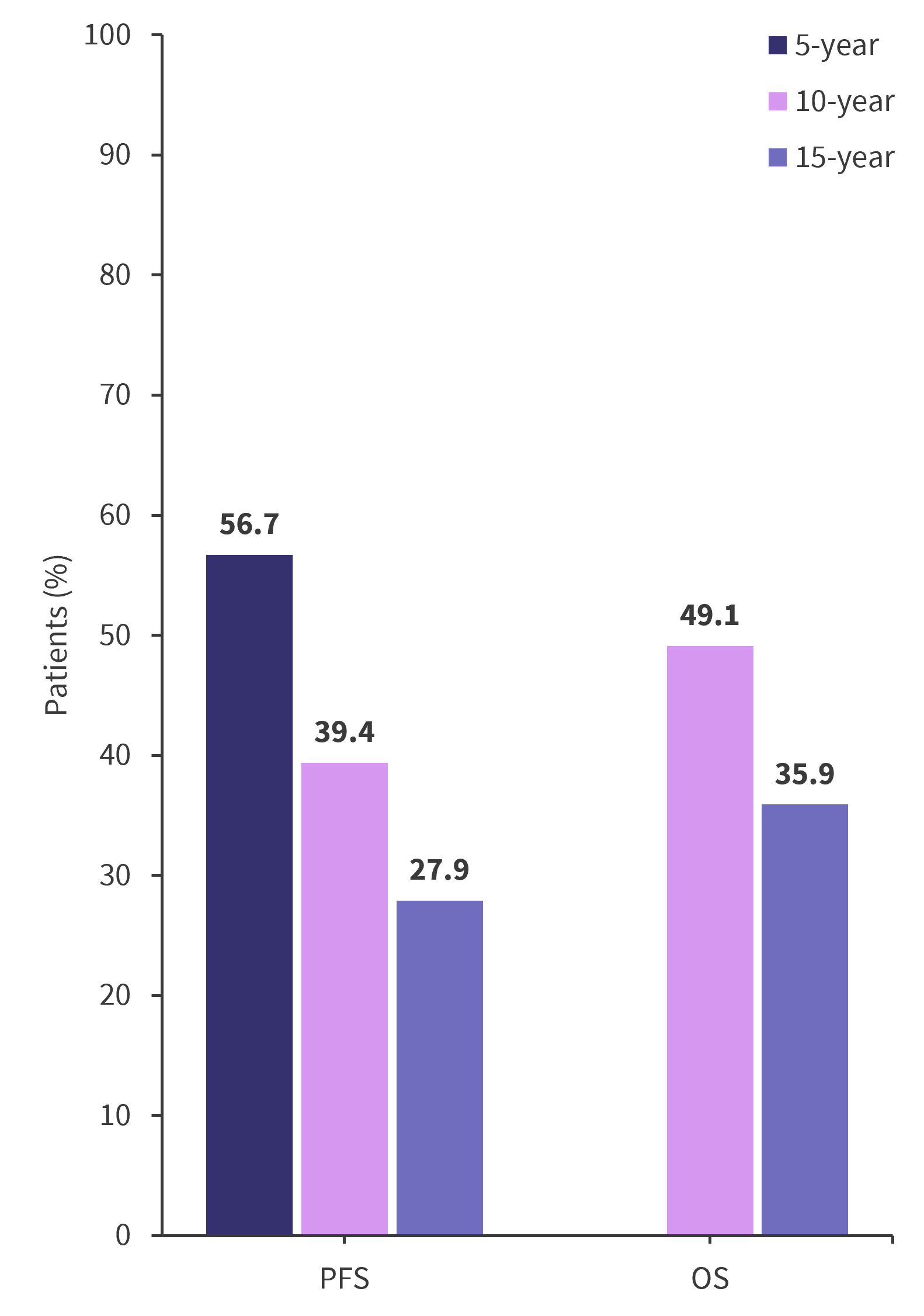All content on this site is intended for healthcare professionals only. By acknowledging this message and accessing the information on this website you are confirming that you are a Healthcare Professional. If you are a patient or carer, please visit the International Myeloma Foundation or HealthTree for Multiple Myeloma.
The mm Hub website uses a third-party service provided by Google that dynamically translates web content. Translations are machine generated, so may not be an exact or complete translation, and the mm Hub cannot guarantee the accuracy of translated content. The mm and its employees will not be liable for any direct, indirect, or consequential damages (even if foreseeable) resulting from use of the Google Translate feature. For further support with Google Translate, visit Google Translate Help.
The Multiple Myeloma Hub is an independent medical education platform, sponsored by Bristol Myers Squibb, GSK, Johnson & Johnson, Legend Biotech, Pfizer, Roche, and Sanofi. The levels of sponsorship listed are reflective of the amount of funding given. View funders.
Now you can support HCPs in making informed decisions for their patients
Your contribution helps us continuously deliver expertly curated content to HCPs worldwide. You will also have the opportunity to make a content suggestion for consideration and receive updates on the impact contributions are making to our content.
Find out more
Create an account and access these new features:
Bookmark content to read later
Select your specific areas of interest
View multiple myeloma content recommended for you
Extended maintenance with VRD in NDMM: A 15-year follow-up
High-risk multiple myeloma (MM) presents with typically more progressive disease and poorer outcomes than those with standard or low-risk disease. During the maintenance period of treatment, the addition of a proteasome inhibitor to standard-of-care treatment is suggested. One of the maintenance combinations being investigated for these high-risk patients is the proteasome inhibitor bortezomib, with lenalidomide and dexamethasone (VRD).
Here, we summarize a publication by Al Hadidi et al.1 in Blood Advances on the 15-year follow-up results of extended maintenance with VRD in newly diagnosed MM from the total therapy (TT) IIIB cohort of the UARK 2006-66 study (NCT00572169).
Study design and patient population1
- TT IIIB was an extension of the UARK 2003-33 (NCT00081939) TT III study, comparing the impact of three years of maintenance with VRD with one year of bortezomib, thalidomide, dexamethasone followed by two years of thalidomide and dexamethasone maintenance in TT IIIA.
- A 15-year follow-up analysis assessed the long-term outcomes in patients (21% with gene expression profile (GEP)-defined high-risk MM) who received extended VRD maintenance.
Key findings1
- After a median follow-up of 15.4 years, median progression-free survival (PFS) was 5.6 years and overall survival (OS) was 9.1 years. PFS and OS rates throughout the follow-up period are shown in Figure 1.
- Overall, the following GEP-defined low-risk vs high-risk patient outcomes were recorded, respectively:
- median PFS; 7.8 years and 2.2 years; and
- median OS; 11.2 years and 2.8 years.
- TT IIIB did not result in improvement of OS compared with TT IIIA at a hazard ratio of 1.2 (95% confidence interval [CI], 0.9–1.5; P = 0.166)
- PFS was poorer in TT IIIB than in TTIIIA at a hazard ratio of 1.3 (95% CI, 1.0–1.6; P = 0.048)
- Patients treated in TT IIIB vs TT IIIA had a higher incidence of certain adverse factors, including low albumin levels (45% vs 26%, respectively) and high β2 microglobulin levels (57% vs 45%, respectively.
Figure 1. PFS and OS rates over time*

OS, overall survival; PFS, progression-free survival.
*Data from Al Hadidi, et al.1
|
Key learnings |
|---|
|
References
Please indicate your level of agreement with the following statements:
The content was clear and easy to understand
The content addressed the learning objectives
The content was relevant to my practice
I will change my clinical practice as a result of this content
Your opinion matters
HCPs, what do you view as the greatest barrier to the use of belantamab mafodotin combinations in clinical practice?



